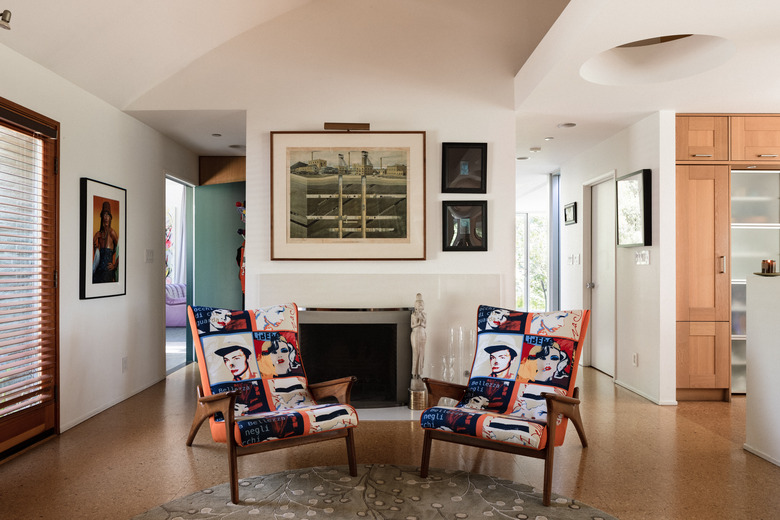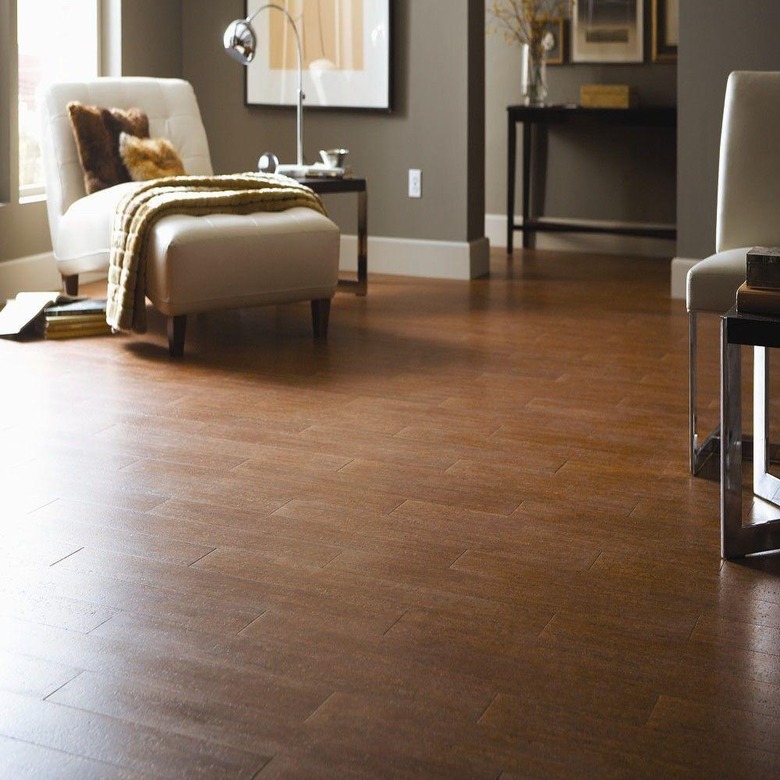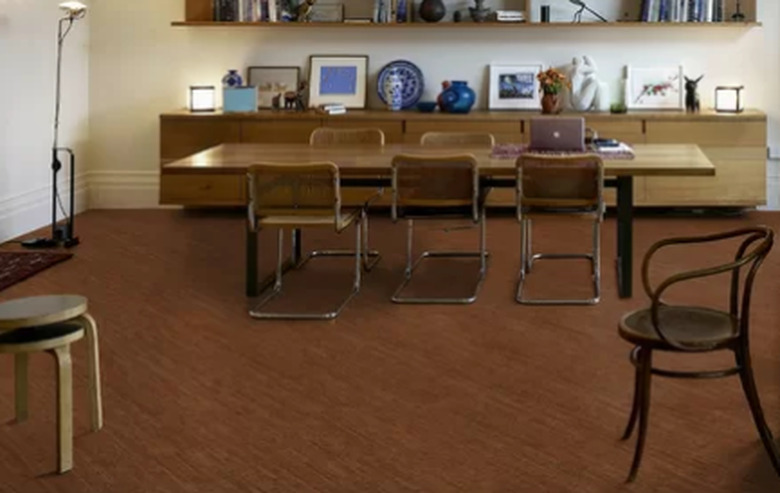Cork Flooring Planks: What You Need To Know
It's durable, a renewable resource, low maintenance and even beautiful — cork flooring may be the unsung hero you're looking for in your home. It's not just a cheap solution, either; Frank Lloyd Wright used cork flooring in his Fallingwater house. As a solid choice for buildings as varied as churches, libraries, and even the Mayo Clinic, maybe cork flooring is right for you too.
Cork Plank Flooring
Cork Plank Flooring
One of the most DIY-friendly flooring materials is cork flooring planks. Cork flooring planks are a type of engineered flooring. The planks are typically composed of a fiberboard core laminated between two layers of cork. The planks are designed with edges that snap together like other laminate flooring and are meant to be installed over a thin cushion of underlayment as a cork floating floor. The plank design doesn't require adhesives, making it a relatively simple DIY project to update your home.
The price of cork flooring planks depends on the width, thickness and finish of the product. Typically, cork flooring planks are somewhere between $2 and $7 per square foot, according to Home Flooring Pros. The true cost benefit is in the installation cost, as cork plank is much more economical than traditional hardwood flooring installation.
Read more: What You Should Know About Cork Flooring
Cork Plank Flooring Versus Cork Tile
Cork Plank Flooring Versus Cork Tile
The primary difference between cork flooring planks and cork tiles is the installation process. While cork planks are a floating floor system, which snaps together without adhesive, tiles are glued down to fix them to the subfloor. It doesn't sound like a big deal, but that can make cork tiles a more difficult DIY project — plus, cork tile is generally less forgiving, requiring a more perfectly smooth subfloor (wood or concrete is a must). It also needs strong adhesives that often give off fumes and VOCs.
Cork can be purchased prefinished in a variety of styles or unfinished for custom sealing to achieve the look you desire. Both planks and tiles have similar maintenance needs, although the tiles may be more prone to issues from water or moisture due to the adhesives.
Pros of Cork Plank
Pros of Cork Plank
For the environmentally conscious, cork flooring is about as sustainable as options get. According to How Stuff Works, harvesting the cork doesn't damage the trees, so they'll continue living and producing additional cork. It's also an efficiently used resource because cork scraps can be gathered and reused during manufacturing, so there's very little waste.
Cork plank also provides benefits for those who suffer from allergies since it's hypoallergenic and anti-microbial. It's easy to clean and maintain and will often even allow for being refinished if the cork layer is thick enough. The natural softness of the material makes it comfortable on which to walk, and it dampens sounds as well.
Cork plank is typically compatible with radiant heating, but even without radiant heating, users find that cork is better at retaining heat than harsher materials like tile. Compared to cork tiles, cork plank has the benefit of not requiring adhesive, making it a DIY-friendly material or cheaper to have installed professionally.
Cons of Cork Plank Flooring
Cons of Cork Plank Flooring
On the flip side, the softness of cork flooring can make it prone to damage from things like pet claws, high heels or furniture over long periods of time. It also reacts to climate changes, such as high/low temperatures and swings in humidity. It is critical that cork plank flooring be allowed to rest in your room for the time period recommended by the manufacturer prior to being installed.
Spills on cork flooring must be handled promptly to prevent the moisture from damaging the flooring. It's also wise to check the manufacturer's recommendations for resealing your cork floor planks periodically. Cork is also more prone to change color due to sun exposure than hardwood or laminate flooring. If you're working with a space that gets a lot of sunlight, cork plank flooring might not be your best option.
Despite the cons, cork flooring is gaining favor with homeowners and pros alike. With numerous benefits and plenty of options, chances are there's a version out there that will work for your project.
Styles of Cork Planks
Styles of Cork Planks
Cork plank flooring typically comes as a matte prefinished product in a variety of color and pattern choices. Visually, some options are obviously made from cork and closely resemble what you would expect to find as the stopper in a bottle of wine. Other cork floors are engineered to mimic wood patterns, making it more difficult to know that the floor is made from cork. The sealing process offers a great deal of choices, including a variety of shades and effects like marbling.
Cork plank also comes in an array of plank widths and thicknesses that contribute directly to cost and warranty length. Thicker cork layers allow for refinishing and extended warranties, but they carry a higher cost as well.
Installation Tips for Cork Plank Floors
Installation Tips for Cork Plank Floors
Designed for simple installation, homeowners can tackle a cork plank floor with a few good instructions. As always, follow manufacturer recommendations for the flooring you choose.
Read more: 7 Surprising Facts You Need to Know Before Installing Cork Bathroom Flooring
Some general recommendations:
- Allow your cork flooring to acclimate in your home before beginning installation.
- Choose an appropriate cork underlayment and moisture barrier for your flooring depending on your subfloor.
- Use the manufacturer-recommended spacers around the edge of your room to create an expansion joint and prevent bowing in the floor.
- Colors of cork individual planks will vary, so lay out your floor before you start installing it to make sure you're happy with the overall look.
- Cork plank can handle a quickly cleaned spill, but it doesn't like prolonged moisture. It's not a good option for bathrooms.
- Get the right tools. If the manufacturer recommends a tapping block, a specific hammer or mallet or other helpful gadgets, then use them to avoid damaging your floor.


